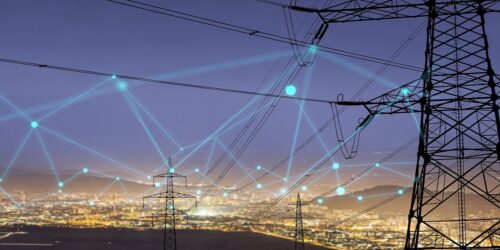Asia now hosts about one-fourth of the world’s operational nuclear power units. As of June 2021, six Asian markets and regions (Japan, South Korea, mainland China, Taiwan, India, and Pakistan) were running 113 reactors producing 97.4 GW of energy. Over half of these reactors were built before 2011.
According to the World Nuclear Association, around two-thirds of reactors currently under construction are based in Asia. As energy prices rise and energy security concerns threaten the balance of power in the region, Asian economies are building new nuclear power plants and restarting halted reactors. Pakistan and India are among the countries that are doing this. Nuclear power contributed to 8.4 per cent to the total electricity generation from Pakistan between 2020 and 2021.
Countries in Asia have shown a commitment to limit their dependency on coal power plants, prioritising renewable energy to meet climate targets. However, progress is painfully slow, and some countries have backtracked on their goals. Rosy public statements about success in this endeavor have proven premature, and many countries, including Vietnam, have reversed plans to replace coal with renewables due to concerns about future power supplies. Energy crises, arguably caused by an overreliance on coal, are being addressed in a predictable manner, either promoting more nuclear energy or coal.
In the fiscal year 2019-2020, four coal-fired CPEC power plants generated 19 percent of Pakistan’s electricity. The 4.62 GW of coal-fired generation funded by CPEC includes the 1,320 MW Huaneng Shandong Ruyi-Sahiwal Coal Power Plant, the 1,320 MW Port Qasim Coal Fired Power Plant, the 1,320 MW HubCo Coal Fired Power Plant, and the 660 MW Engro Thar Coal Power Plant, all of which began supplying electricity to the national grid between 2017 and 2019. Construction on the Thal Nova, Thar Energy (HubCo), and Shanghai Electric (SSRL Thar Coal Block I) power plants to increase 1,980 MW of capacity is currently underway.
Measure of energy balance
According to WorldData’s Pakistan profile, total consumption of 92.33 billion kWh of electric energy per year is the most important measure in Pakistan’s energy balance. This equates to an average of 410 kWh per person. According to this, Pakistan can completely rely on self-generated energy. The total output of all electric energy producing facilities is 110 billion kWh, accounting for 119 percent of total requirements. The remainder of self-produced energy is either exported or goes unused.
During the last two decades, Pakistan’s energy usage (which also include bioenergy) quadrupled at a 4.4 percent annual growth rate. From 2000 to 2010, oil consumption remained almost constant while natural gas consumption increased significantly, according to IAEA.
From 2009 to 2019, indigenous oil production remained between 65,000 and 95,000 barrels per day which is equivalent to about 16-21 percent of the country’s oil consumption, while natural gas production was 3,936 million cubic feet per day in fiscal year 2018-19.
Coal consumption increased at a rapid rate in 2018-19, owing to increased use of cement and other enterprises. Local coal production was 5.5 million tons between 2018 and 2019, while imports totaled 15.7 million tons. During this time-period, the residential sector consumed nearly half of total electricity usage, while hydroelectric power supplied 21.3 percent of Pakistan’s power generated.
Options for energy production
Nuclear power contributed to 8.4 percent of Pakistan’s total power generation between 2020 and 2021, while it accounted for 6.3 percent of total installed capacity. On a leveled cost of electricity, nuclear energy is the cheapest source of energy.
The electricity produced by operating Nuclear Power Plants (NPPs) of PAEC is delivered to its clients, namely K Electric in Karachi and Central Power Purchasing Agency (CPPA) in the rest of the country. PAEC has increased its efforts to meet the government’s Energy Security Plan’s target, which was established in 2005, of 8,800 MW of nuclear electricity generation by 2030. The completion of the K-2/K-3 project will be a significant step toward achieving the PAEC 2,200 MW target. PAEC intends to develop more sites across the country to house additional nuclear power plants in the future.
According to data released at the beginning of August, out of 18,400MW of energy generated, almost 11,000MW are from hydro power plants and nuclear power plants. The remaining 7,400MW of energy was mostly from gas and coal fired power plants.
These figures show that decision-makers have learnt how to produce cheaper energy. At least 1000MW of energy is produced by wind. In 2020, the US Energy Information Administration predicted that by 2025, coal would cost slightly more than $90 per megawatt-hour, compared to $63 for onshore wind and $48 for solar. Still, Pakistan and most of the Asian countries rely heavily on nuclear, hydro and/or coal power options.
Pakistan is relying too much on coal-fired power plants which are volatile options considering the climate crisis and the environmental cost of carbon emission. Before, Pakistan relied too much on liquified natural gas (LNG) to fulfill its energy shortcomings but because of the Russia-Ukraine war, LNG is not available in the market. At the moment, all of the LNG is going to Europe due to a ban on Russian petroleum products. Over time, Pakistan increased its generation capacity through the installation of new RLNG and coal-fired power plants. However, the country does not have enough funds to purchase fuel for these plants. Gas and coal-fired power plants are extremely sensitive to price fluctuations in the international market.
To address the shortage of electricity, the government recently issued a tender for the purchase of ten LNG cargos on the spot market. But as expected, none of the companies submitted bids due to high demand and higher prices in Europe. Given the current scenario, expensive LNG and coal-based power plants are proving difficult options, suggesting Pakistan should have focused more on nuclear power facilities.
Imported fuel for local plants
Developments in the construction of coal-fired power plants have come under scrutiny as countries pledged to limit warming to 1.5° Celsius as part of the Paris Accord. China’s policies and actions in financing coal-fired power plants abroad have gotten a lot of attention in recent years, especially since major international financial institutions have begun to prohibit investment in coal-based generation.
One of the main problems with power plants – whether they are coal powered, nuclear powered or LNG — is the transportation of fuel to plants. Chashma Nuclear Power Plant (CHASNUPP) conductors run on Chinese fuel and Sahiwal coal power plant runs on South African coal. Because of this, it has become a headache to transport Chinese fuel and South African coal all the way from the Karachi port to Chashma and Sahiwal. Sahiwal coal fired power plant should be built near coastal area or ports but weren’t because of political reasons.
Pakistan has an estimated 1,450 million tons of oil equivalent coal available. The government subsidized the development of new coal-fired power plants using locally sourced coal. Coal-fired power plants that use locally sourced coal have a higher rate of return on equity than plants that use imported coal. The volatility of the Pakistani rupee against the US dollar also pushed Pakistan to use locally available resources.
Nuclear energy dynamics
It is rumored that to cut the fuel transportation costs for CHASNUPP power plants, the Chinese government is setting up a local fuel generation facility nearby. Similarly, the Karachi Nuclear Power Plant may be designed going forward to keep transportation costs in mind.
The newly constructed Mattiari-Lahore HDVC transmission line can be best utilized, since Punjab is the country’s largest province and biggest consumer of electricity. However, plants set up in Punjab make less sense if their fuel needs to be transported from Karachi’s port.
Nuclear energy might seem to provide an answer for Pakistan’s energy woes and KANUPP nuclear power plant facilities near Karachi seems to sideline all other power production facilities in the country. But it also poses a serious heath and security threat for metropolitan Karachi. Pakistan is a country with a north-south wind direction and strong winds coming from the sea towards the city. If any incident happens and uranium enriched radiations erupts in the air, all of Karachi would be compromised.
Aside from the nuclear hazard these plants pose, they still require Chinese fuel to be imported for them to run. KANUPP seems to address this issue as well. However, Pakistan cannot focus too much on the promise of nuclear power. It also needs to take responsibility not only for the environment and people, but also for long-term electricity production and jobs. The state needs to develop a framework to decide where to store the spent radioactive nuclear fuel, too. Looking to examples like Germany and Sweden, Pakistan can find a strategy to fulfill its energy needs while responsibly dealing with its nuclear waste. If it can do this, it can be a leader in Asia when it comes to the future of energy.







